Positive Relationships: Behaviour - 'Me' time
Julia Manning-Morton
Monday, March 9, 2015
Developing self-awareness is about learning who you are. Julia Manning-Morton looks at how twos can be supported in this

Some of the everyday behaviours that practitioners working with two-year-olds encounter arise from the developmental process of being and becoming their own person. From infancy, young children are establishing an understanding of their own existence.
This inner awareness of themselves begins with experiences of their own agency - the impact they have on objects and people - and develops into an awareness of their uniqueness and the continuity of their identity. For two-year-olds, this aspect of development is a central focus: learning about who they are, what their capabilities are and how they are the same and different to others.
AUTONOMY AND INDEPENDENCE
In the process of establishing a view of themselves as a unique, autonomous person, two-year-olds are exploring and asserting exactly what they like or don't like, want to do or not do. This can be interpreted by adults as 'defiance', but can often be better understood as children showing independence of thought and action; having their own agenda, practising making decisions and expressing preferences.
These are skills that can take a long time to refine. For example, they may struggle with making choices and may frequently change their minds - asking for custard on their pudding, then wailing with dismay when it is poured on, saying they don't want it.
They may also assert their independence when it is not necessarily in their interests to say 'no' to something they really want - refusing food or sleep when they are clearly hungry or tired (Manning-Morton and Thorp, 2015).
These can be baffling and frustrating behaviours for the practitioner, but are part of the exploration and experimentation involved in learning to be an autonomous decision-maker. These are important social skills, which adults sometimes end up having to re-learn at 'assertion' classes because the way they learned them as children does not serve them well in life. So, it is important that two-year-olds are helped to explore their autonomy in a way that maintains a positive view of themselves.
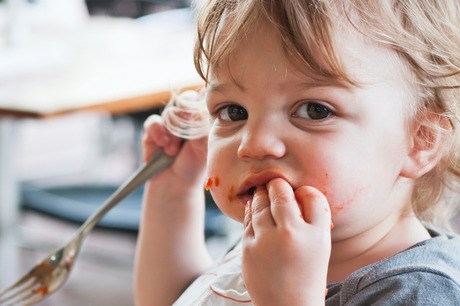
SELF-CONCEPT AND SELF-ESTEEM
As well as an inner self-awareness, children are developing an understanding of themselves as part of different social categories - being a sister, a boy or a Sikh, for example. In this process, children receive messages from the verbal and non-verbal reactions of others about how a child in that particular social category is expected to be.
These responses tell young children what others think of them, whether they are troublesome or well-behaved, clever or stupid and so on, which will impact hugely on their self-concept and self-esteem as they are internalised by the child.
A positive (or negative) self-concept will affect how a child responds to new experiences, different people and their approach to learning. This includes how they are made to feel about their gender, ethnicity, ability, culture and language and whether others accept them and see them as competent and worthwhile. Children who are labelled negatively may internalise these messages and existing behaviours become reinforced as the child learns that boys are 'tough' or Asian girls are 'compliant', for example. It is important that practitioners remember the uniqueness of each child - many boys are gentle and Asian girls can be rebellious!
Practitioners should also keep in mind that ideas about what constitutes an adequate self are socially and culturally constructed. For example, in China inhibition is perceived as reflecting social maturity but in North America it is perceived to reflect immaturity.
Two-year-olds entering early years settings have already absorbed a lot of information from their families about who and how they should be; it is the practitioner's job to find out as much about that as possible from parents and carers and then to adjust their expectations and responses in a way that is going to be helpful to that child. This should include reflecting on whether your responses to particular behaviours are consistent between children of different genders, ethnicities or abilities.
With understanding and support, a two-year-old will learn how to move out into the world with confidence in their own abilities and a confident expectation that they can look to others for assistance when necessary.
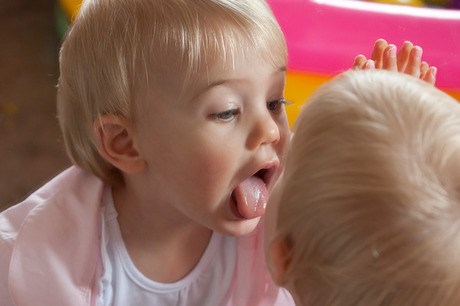
SECURE BASE
Exploring the balance between dependence and independence is central to a two-year-old's developing sense of self and understanding of relationships. This is called 'secure base' (Bowlby, 1988), which is key to understanding the fluctuating behaviours of two-year-olds.
By responding sensitively to a child's changing needs for comfort and reassurance but also for exploration and independence, the practitioner provides the child with a secure base and helps the child to develop an inner feeling of safety and trust at the same time as being outgoing and competent.
How each child in an early years setting experiences and, therefore, expresses their need for a secure base will already be hugely influenced by their home experiences, but through careful observation practitioners may be able to identify when a child is looking for safety and reassurance and when they want exciting autonomy. For example, you may sometimes observe a child clinging or following and other times walking away or running off, sometimes being open and friendly to others but other times avoiding them.
It is then useful for practitioners to reflect on their responses:
- Do you give children positive messages about exploring away from you or are you often advising them to 'be careful' or even interrupting their play for a cuddle they haven't looked for?
- Do you accept children's need to be near you for reassurance or distract them with an activity so you can go to deal with another task?
- For how much of the day are you sitting with the children, anchored in an area where they know to find you, or are you always moving around being 'busy'?
Providing children with a secure base will help them to feel safe and contained. They may react with confusion and erratic behaviour where their key person is not consistently emotionally and physically available to them.
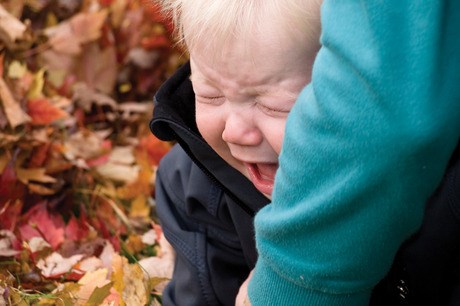
PRACTICE AND RESPONSES
Two-year-olds will also feel safe and contained where clear, reasonable boundaries are implemented consistently by practitioners and parents. Where there are confused messages about what is and isn't allowed, two-year-olds will respond with confusion and will push to find where the boundaries actually are. This requires that practitioners spend time talking to each other and to parents and carers about what they believe to be acceptable behaviour, to ensure there is consistency.
Consistency means that if it was unacceptable to snatch in the morning, it must be in the afternoon too; it does not mean having rigid rules. Revising a decision that was mistaken or unnecessary on the adult's part models flexibility and a willingness to change your mind in the face of other evidence. This teaches children the value of engaging in dialogue and negotiation and about differing points of view (Manning-Morton and Thorp, 2006). Developing a finely tuned balance between flexibility and consistency is a key professional skill in early childhood practice and one that requires continuous review.
Balance also needs to be applied in practitioners' responses to two-year-olds' assertiveness or defiance. Understanding that the two-year-old is exploring being a separate person and being independent and not trying to be difficult helps practitioners not to overreact. It can be useful in many situations to use humour to diffuse potential defiance and conflict.
If you can make a game out of a two-year-old's outrageous request, they may join in the spirit of the game and learn in a playful way what is permitted and what is not. Where this doesn't work, it is usually sufficient to just to restate the boundaries calmly with a simple explanation, then to offer an alternative, moving with the child to another space or removing the hazardous item (Manning-Morton and Thorp, 2003, 2006).
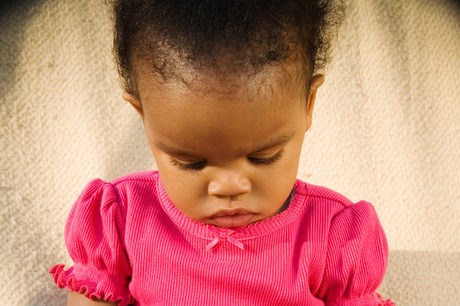
REFLECT AND EVALUATE
- Are opportunities for children's choice and decision-making built into the day?
- Are choices manageable, so you are giving a child two or three choices rather than a huge range of alternatives?
- Are resources and equipment clearly stored with picture labels for easy identification and selection?
- Are there serving dishes and implements that enable children to serve their own food? Is snack time flexible?
- Is water and fruit available throughout the day? (This caters for different body/eating rhythms and helps to avoid mood swings due to falling blood sugar levels.)
- Is the food familiar to all the children?
- Does the environment reflect diversity, with equipment that reflects the children's homes and notices in home languages?
- In the bathroom, are there low toilets, sinks and towels and taps that can be turned on and off to allow children independence?
- Is there personal, accessible storage for coats, shoes and comforters, labelled with photographs and names for easy identification by children and adults?
- Are there displays of photographs of the children their friends and family and their pets and favourite toys?
- Do all the practitioners show children that they are still on their side when things go wrong, willing them to succeed with this challenging task and allowing that we all make mistakes along the way?
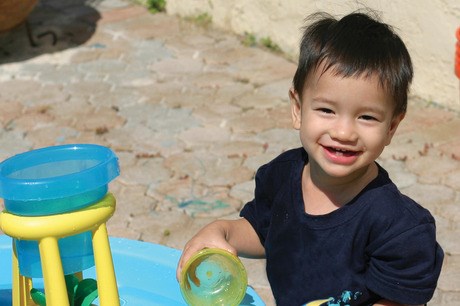
MORE INFORMATION
- A Secure Base: clinical applications of attachment theory by J Bowlby (1988)
- Key Times for Play: the first three years by J Manning-Morton and M Thorp (2003)
- Key Times: a Framework for Developing high quality provision for children from birth to three years by J Manning-Morton and M Thorp (2006)
- Two-Year-Olds in Early Years Settings: journeys of discovery, by J Manning-Morton and M Thorp (2015).




